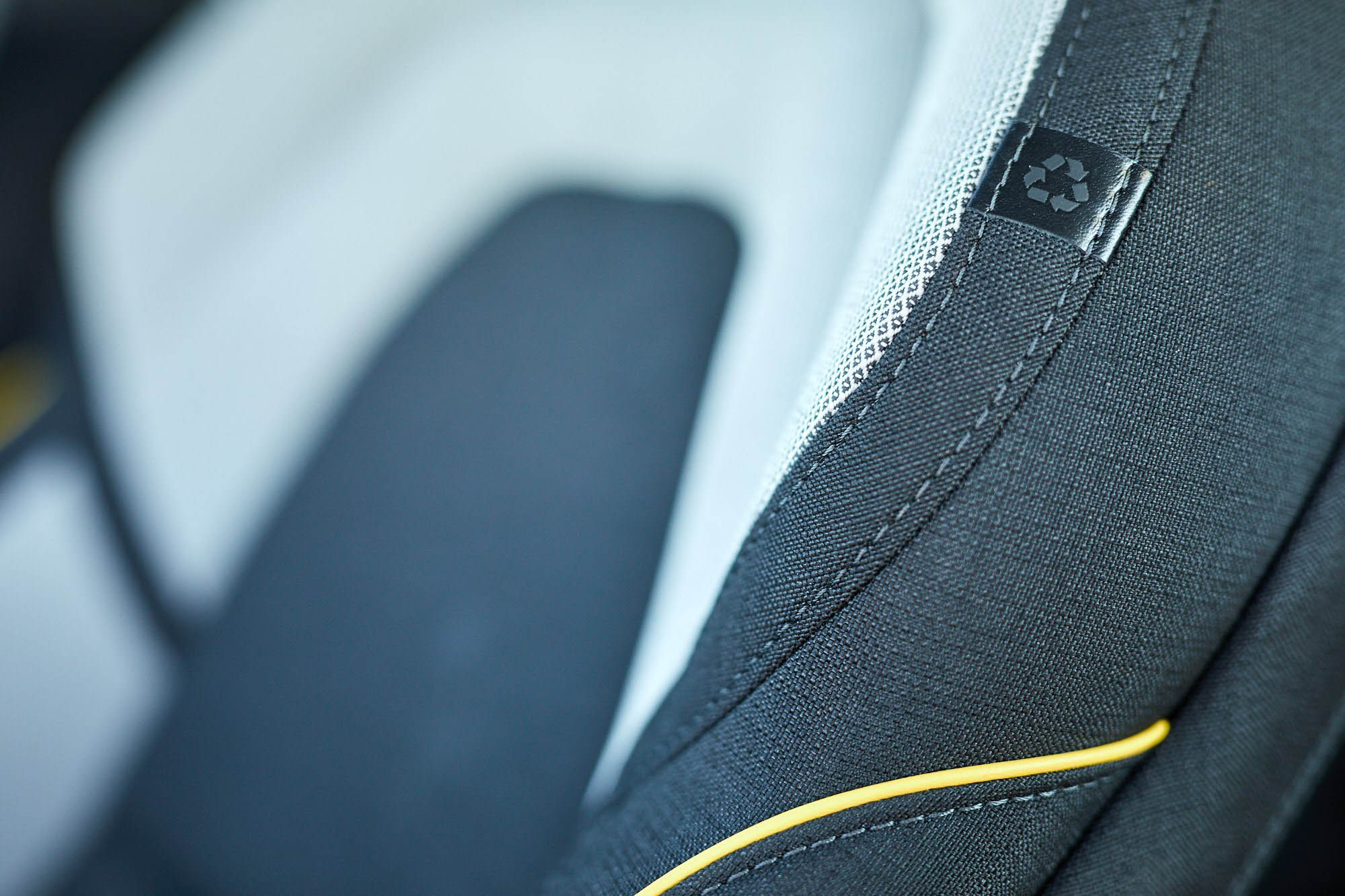How Automakers Are Incorporating Sustainable Materials Into Their Cars
Materials made from plants, recycled water bottles, old blue jeans, and fishing nets are finding their way into new cars.
 Volvo
Volvo
As hybrids, plug-in hybrids, and battery-electric vehicles proliferate, customers increasingly can find cars that feature eco-friendly interiors to match the eco-friendly electrified powertrains.
Automotive materials used today often include alternatives to animal leather upholstery and traditional wood trim. Elements as diverse as sustainably grown bamboo and plastics recovered from the oceans are being featured in new cars.
 Lexus
Lexus
Finding Sustainable Sources for Wood Trim
Although wood is still used to frame the bodies of specialty vehicles such as limited-production Morgan sports cars, it has not been used in mass-produced vehicles in decades. These days, when luxury cars use wood for interior trim, automakers tend to turn to sustainable sources — including lumber reclaimed from fence posts.
Luxury carmaker Lexus is among brands that have used bamboo, a quickly growing renewable resource, for interior trim. The summerwood trim option in Porsche's 2025 Macan electric SUV is a veneer from supplier Karuun, which makes it from rattan, a sustainable vine.
 Ford
Ford
Soybeans Can Be Used for Interior Materials
On average, new cars and SUVs use about 355 pounds of plastic throughout the vehicle. These materials have historically been derived from fossil fuels, but carmakers now are exploring bioplastics. Such composites mix traditional plastic materials with natural fibers, including cellulose, hemp, flax, and soy.
The idea is not new. In 1941, Ford showed off an experimental car with a body made from soybeans. More accurately, the material was "soybean fiber in a phenolic resin with formaldehyde used in the impregnation," according to information from the Henry Ford Museum of American Innovation. That means plastic reinforced by soybean fibers.
Ford never produced a soybean car body, but in 2008, the company began using soy-derived foam in the seat cushions of North American-built vehicles. Nine years later, the company reported that such cushions in 18.5 million cars had prevented 228 million pounds of carbon-dioxide emissions.
The automaker also has touted using other sustainable materials, including castor oil, wheat straw, kenaf fiber, cellulose, wood, coconut fiber, and rice hull, all sourced from agricultural waste.
Bioplastics Are Inside, Outside, and Under the Hood
Ford's use of soy in that 1941 experimental car and today's seat cushions falls under the umbrella of bioplastics. Today, a bioplastic made from sugarcane and castor oil is used to make brake hoses, fuel lines, and flexible tubing. Other bioplastics, including one derived from sugarcane and a resin certified as entirely renewable, are used for various interior and exterior vehicle components, including bumpers, side cladding, consoles, and dashboards.
Bioplastic proponents cite benefits such as reduced fossil fuel usage and lower carbon emissions when produced. They also claim quicker decomposition when correctly processed at the end of the vehicle's life. The material is not without some possible environmental drawbacks, but the development of more environmentally benign materials continues.
A 2017 study published in the journal Environmental Research Letters reported that switching to corn-based biopolymers could reduce industry greenhouse gasses by 25%, or about 16 million tons of carbon dioxide per year. The reduction could be up to 75% if renewable energy is used.
 Volvo
Volvo
Carmakers Embrace Animal-Free Interiors
Many new vehicles offer vegan leather seating, which is typically a different term for vinyl. Some carmakers, however, are offering other alternatives to cowhide that use renewable materials. Volvo announced three years ago that all its electric vehicles (EVs) would be leather free, citing animal welfare as a reason.
As a leather alternative for its EX30 and EX90 EVs, Volvo developed its Nordico upholstery using recycled polyester from polyethylene terephthalate (PET) water and soda bottles and polyvinyl chloride (PVC) made from "bio-attributed" material from Swedish and Finnish forests. The EX30 will also offer interior trim made from recycled denim fibers.
Volvo also offers a tailored wool-blend upholstery made from 30% natural wool fiber and 70% recycled polyester, with the wool described as traceable and responsibly sourced. The current XC40 Recharge features partially recycled carpet and upholstery.
Like Volvo, Polestar is owned by Chinese automaker Geely and touts interior materials made with reclaimed or renewable materials. The Polestar 3 model's carpeting is made from 100% Econyl polyamide derived from fishing nets and other plastic waste, and the interior headliner is made from 100% recycled PET.
The company uses a flax composite for the inner door panels and storage compartments, describing the material as 40% lighter than conventional plastic. Additionally, Polestar says 80% of the raw material used in its aluminum interior trim panels comes from post-industrial discards.
 BMW
BMW
Auto Trims Can Be Sourced From the Ocean and Desert
BMW said trim parts in its Neue Klasse EV, expected in 2025, will be made from 30% recycled fishing nets and ropes. The German automaker is also testing a seating material called Deserttex, made from pulverized cactus fibers.
We may soon see other cars using parts derived from plastic reclaimed from the ocean. Forvia, a global auto supplier, recently showed a car interior with door panels made of an experimental compound derived from oyster shells and plastic material recovered from beaches.
Written by humans.
Edited by humans.
 Jim Koscs
Jim KoscsJim Koscs has been writing about cars for more than 30 years, his byline appearing in national enthusiast and trade publications, newspapers, and websites. He covers a broad spectrum of topics in automotive business, culture, collecting, design, history, racing, and technology. The "car thing" goes way back for Jim. At the 1968 New York Auto Show, he snuck away from his father to get a better look at a Rolls-Royce... from underneath it, to see if it had dual exhausts. (It didn't.)
Related articles
View more related articles